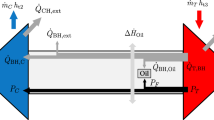Zusammenfassung
Internal combustion engines are increasingly being equipped with turbochargers to increase performance and reduce fuel consumption and emissions. Being part of exhaust and intake systems, the turbocharger strongly influences the orifice noise emission. Although 1D-CFD simulations are commonly used for the development of intake and exhaust systems, validated acoustic turbocharger models are not yet state-of-the-art. Additionally, there are only few literature sources on the acoustic influence of the turbocharger. Consequently, the aim is the investigation of the influence on the orifice noise and the development of an accurate model for 1D-CFD simulations.
Therefore the acoustic transmission loss was measured for a wide operating range of four turbochargers, including wastegate and VTG-system variations. The applications range from small gasoline engines up to large diesel engines. These investigations reveal that low frequencies for compressors and turbines are dominated by impedance discontinuities, while the upstream transmission loss increases considerably with high mass flows and pressure ratios. Especially for the compressor, high frequencies are determined by destructive interference in the stator. Overall, the turbocharger has a high damping potential.
While Aymann’s common simulation approach accurately captures low frequencies, a new generic approach was developed to additionally model high-frequency interferences by linking the stator geometry with potential sources and turbocharger performance maps. In this way, high acoustic and thermodynamic prediction quality could be achieved. This could be proven especially for higher frequencies of the intake orifice noise, where the predicted sound pressure level was corrected by up to 5 dB.
The presented newly developed model for 1D-CFD simulations increases the efficiency of the acoustic development process of intake and exhaust systems. The applied measurement approach has great potential to further improve also the model development process of other intake and exhaust system components.
Access this chapter
Tax calculation will be finalised at checkout
Purchases are for personal use only
Preview
Unable to display preview. Download preview PDF.
Similar content being viewed by others
Literatur
1. MAYER, Michael; KRÄMER, Günter; BRAMERT, Dorothee: Turbochargers: Effective use of exhaust-gas energy. 3rd revised edition. Munich: Verlag Moderne Industrie, 2011
2. SCHARF, Johannes: Ottomotoren für Hybridantriebe – Hochtechnologie oder Low-Cost Aggregate?: 38. Internationales Wiener Motorensymposium. Wien, 27.04.2017
3. ÅBOM, Mats: Measurement of the scattering-matrix of acoustical two-ports. In: Mechanical Systems and Signal Processing 5 (1991), Nr. 2, S. 89–104
4. ÅBOM, Mats: Error analysis of two-microphone measurements in ducts with flow. In: The Journal of the Acoustical Society of America 83 (1988), Nr. 6, S. 2429
5. MÜLLER, Sven; MASSARANI, Paolo: Transfer-function measurements with sweeps—Director’s cut including previously unreleased material and some corrections 49 (2001), S. 443–471
6. KARLSSON, Mikael; GLAV, Ragnar; ABOM, Mats: The Herschel-Quincke tube: the attenuation conditions and their sensitivity to mean flow. In: The Journal of the Acoustical Society of America 124 (2008), Nr. 2, S. 723–732
7. AYMANNS, Richard; SCHARF, Johannes; UHLMANN, Tolga; PISCHINGER, Stefan: Turbocharger Efficiencies in Pulsating Exhaust Gas Flow. In: MTZ worldwide 73 (2012), 7-8, S. 34–39
8. VELOSO, Rafael; ELNEMR, Yasser; REICH, Franz Markus; ALLAM, Sabry: Simulation of Sound Transmission through Automotive Turbochargers. In: SAE International, 2012 (SAE Technical Paper Series).
9. JAPIKSE, David; BAINES, Nicholas C.: Introduction to turbomachinery. Reprint. White River Junction Vt.: Concepts ETI [u.a.], 1997
Author information
Authors and Affiliations
Editor information
Editors and Affiliations
Rights and permissions
Copyright information
© 2019 Springer Fachmedien Wiesbaden GmbH, ein Teil von Springer Nature
About this paper
Cite this paper
Ruppert, H., Günther, M., Pischinger, S. (2019). Acoustic transmission loss in turbochargers. In: Bargende, M., Reuss, HC., Wagner, A., Wiedemann, J. (eds) 19. Internationales Stuttgarter Symposium . Proceedings. Springer Vieweg, Wiesbaden. https://doi.org/10.1007/978-3-658-25939-6_105
Download citation
DOI: https://doi.org/10.1007/978-3-658-25939-6_105
Published:
Publisher Name: Springer Vieweg, Wiesbaden
Print ISBN: 978-3-658-25938-9
Online ISBN: 978-3-658-25939-6
eBook Packages: Computer Science and Engineering (German Language)




